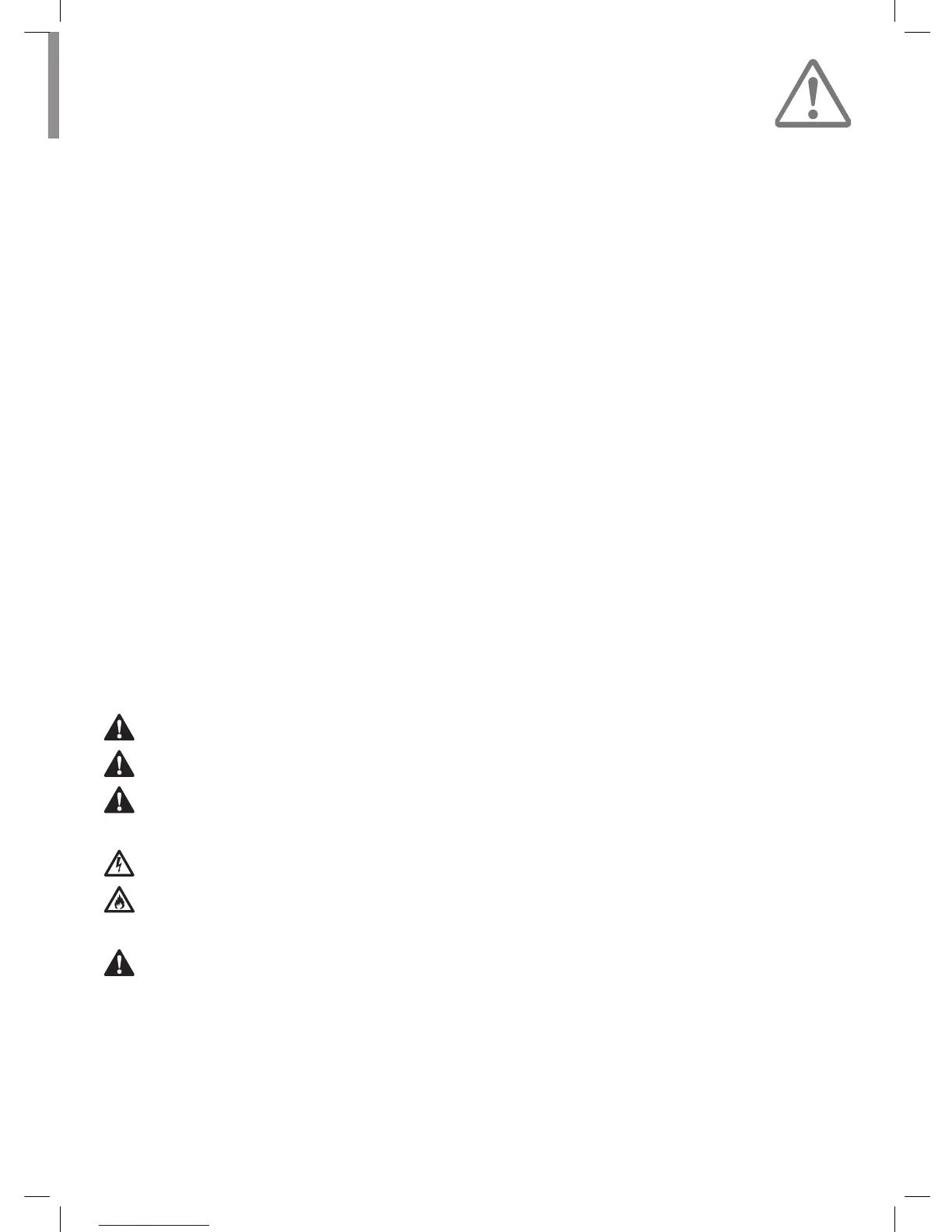23
The Mitre Saw may only be used by persons over 18 years of age or
apprentices/trainees over 16 years of age (while in the presence of
aresponsible supervisor) who are not under the influence of fatigue,
alcohol, medication or drugs.
Misapplications, misuse or “fooling around” may cause lethal injuries and
serious property damage.
For example:
• Overriding of safety mechanisms
• Cutting tree limbs or logs
• Cutting steel or other hard material
• Cutting light alloy, especially magnesium
Modifications to the device, additions to the device or conversions as
well as maintenance operations and repairs performed by yourself can
impair the safety, reliability and proper functioning of the device to
asignificant extent and void any warranty claims.
DWS774: A failure of XPS, has no effect on the intended operation.
UK only
The attention of UK users is drawn to the “woodworking machines
regulations 1974” and any subsequent amendments.
Product code
The product code, which also includes the year of manufacture, is
printed into the housing. (See page 4.)
Example:
2016 XX XX
Year of Manufacture
Definitions: Safety Guidelines
The definitions below describe the level of severity for each signal word.
Please read the manual and pay attention to thesesymbols.
DANGER: Indicates an imminently hazardous situation which, if
not avoided, will result in death or seriousinjury.
WARNING: Indicates a potentially hazardous situation which, if not
avoided, could result in death or seriousinjury.
CAUTION: Indicates a potentially hazardous situation which, if not
avoided, may result in minor or moderateinjury.
NOTICE: Indicates a practice not related to personal injury
which, if not avoided, may result in propertydamage.
Denotes risk of electricshock.
Denotes risk offire.
General Power Tool Safety Warnings
WARNING: Read all safety warnings and all instructions.
Failure to follow the warnings and instructions may result in electric
shock, fire and/or seriousinjury.
SAVE ALL WARNINGS AND INSTRUCTIONS
FOR FUTURE REFERENCE
The term “power tool” in the warnings refers to your mains-operated
(corded) power tool or battery-operated (cordless) powertool.
1) Work area safety
a ) Keep work area clean and well lit. Cluttered or dark areas
inviteaccidents.
b ) Do not operate power tools in explosive atmospheres, such
as in the presence of flammable liquids, gases or dust. Power
tools create sparks which may ignite the dust orfumes.
c ) Keep children and bystanders away while operating a power
tool. Distractions can cause you to losecontrol.
2) Electrical safety
a ) Power tool plugs must match the outlet. Never modify the
plug in any way. Do not use any adapter plugs with earthed
(grounded) power tools. Unmodified plugs and matching outlets
will reduce risk of electricshock.
b ) Avoid body contact with earthed or grounded surfaces such
as pipes, radiators, ranges and refrigerators. There is an
increased risk of electric shock if your body is earthed orgrounded.
c ) Do not expose power tools to rain or wet conditions. Water
entering a power tool will increase the risk of electricshock.
d ) Do not abuse the cord. Never use the cord for carrying,
pulling or unplugging the power tool. Keep cord away from
heat, oil, sharp edges or moving parts. Damaged or entangled
cords increase the risk of electricshock.
e ) When operating a power tool outdoors, use an extension
cord suitable for outdoor use. Use of a cord suitable for outdoor
use reduces the risk of electricshock.
f ) If operating a power tool in a damp location is unavoidable,
use a residual current device (RCD) protected supply. Use of an
RCD reduces the risk of electricshock.
3) Personal safety
a ) Stay alert, watch what you are doing and use common sense
when operating a power tool. Do not use a power tool while
you are tired or under the influence of drugs, alcohol or
medication. A moment of inattention while operating power tools
may result in serious personalinjury.
b ) Use personal protective equipment. Always wear eye
protection. Protective equipment such as dust mask, non-skid
safety shoes, hard hat, or hearing protection used for appropriate
conditions will reduce personalinjuries.
c ) Prevent unintentional starting. Ensure the switch is in the off
position before connecting to power source and/or battery
pack, picking up or carrying the tool. Carrying power tools with
your finger on the switch or energising power tools that have the
switch on invitesaccidents.
d ) Remove any adjusting key or wrench before turning the
power tool on. A wrench or a key left attached to a rotating part of
the power tool may result in personalinjury.
e ) Do not overreach. Keep proper footing and balance at
all times. This enables better control of the power tool in
unexpectedsituations.
f ) Dress properly. Do not wear loose clothing or jewellery. Keep
your hair, clothing and gloves away from moving parts. Loose
clothes, jewellery or long hair can be caught in movingparts.
g ) If devices are provided for the connection of dust extraction
and collection facilities, ensure these are connected
and properly used. Use of dust collection can reduce dust-
relatedhazards.
h ) Do not let familiarity gained from frequent use of tools allow
you to become complacent and ignore tool safety principles.
A careless action can cause severe injury within a fraction of a
second.
